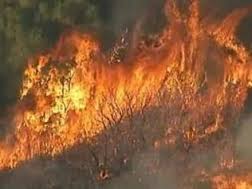Unfortunately, natural disasters occur frequently around the world, often with tragic consequences. As an economics student it is important to consider the impact of natural disasters on the individual, communities, a nation, and at times the world.
Overseas: In the past twelve months there have been many natural disasters around the world, for example: typhoons in the Philippines and India, tornadoes and bushfires in the USA, droughts in parts of Africa, earthquakes and floods in China, cyclones in Bangladesh and hurricanes in Mexico.
In Australia, we have just experienced extreme heat (with consecutive days of 40+ degrees Celsius temperatures) in many states, causing devastating bushfires to occur.
The scale of impact of a natural disaster will depend on a range of factors such as: the size of the disaster and its duration, the geographic area affected, the size of the population living in that area, the time of day it occurred and the structure of the economy.
Losses and costs
Natural disasters cause significant losses. When a disaster strikes, it will devastate capital resources in an area and thus impact on the economy. The infrastructure impacted on could be schools, hospitals, roads, bridges, utilities (gas, electricity, water), as well as the physical capital of people and businesses: homes, factories, buildings, machinery and the like.
Natural disasters cause significant costs due to the need to manage the disaster, minimise its after effects and undertake fixing up the devastation caused.
The economic costs can be material and non-material in nature, with the latter being much harder to measure. This can also mean that some of the costs associated with disasters are not included in our measure of economic activity and production.
The concept map below outlines some of the possible costs associated with a natural disaster. This framework doesn’t cover all possible disasters nor does it cover every possible cost. However, it is a framework that enables the wide range of economic costs to be considered. (Source: Australian Journal of Emergency management. Winter 2001)
Study the concept map and then use examples to distinguish between the following types of costs:
a) Tangible and intangible costs
b) Direct and indirect costs
Estimating the financial cost of disasters is complex given the need to quantify losses. A news headline in May 2013 read: Natural disasters have cost the global economy $2.5 trillion since 2000. Increased globalisation has led to some disasters causing supply chain problems in the global economy. A more inter-connected world means that the impact of some disasters is felt far more widely than just the country the disaster occurred in. “In a world of ongoing population growth, rapid urbanisation, climate change and an approach to investment that continually discounts disaster risk, this increased potential for future losses is a major concern.” (M.Wahlstrom. www.businessinsider.com.au 16/5/2013)
c) What are the cost estimates on the economy of the recent bushfires in Australia?
Super Typhoon Haiyan in the Philippines 2013
ABC TV Foreign Correspondent documentary: The Super Storm shows the devastating impact this typhoon inflicted on the Philippines. Watch the documentary and then answer the questions below.
http://www.abc.net.au/foreign/content/2013/s3899493.htm
Use the concept map above and your knowledge from the documentary to compile the following lists:
a) The personal costs of the typhoon
b) The social impact of the typhoon
c) The effect of the typhoon on small communities
d) The material impact of the typhoon
e) The non-material impact of the typhoon
f) The impact on employment and incomes e.g.: tourism, fishing, farming
g) The impact on non-government organisations
h) The impact on the government of the Philippines
i) The impact on the Australian government
Reactive and proactive disaster measures
It is often argued that much money is spent on disaster recovery and not enough on avoiding and/or minimising the impact of disasters. Some major disasters have prompted action to significantly lessen future losses, such as tsunami warning systems, mobile messaging systems warning of imminent bush fire danger and cyclone shelters. However, it is also argued that perverse incentives are also at work, which means that in some cases, people move to and live in areas that are disaster prone. Poor people in parts of the world moving to cities to find work and yet living in areas where there is increased risk of dying due to floods and mudslides. People moving to coastal areas to be near the sea where storms and floods are a higher risk. Insurance costs may not fully reflect these risks and people may still want to take the risk in the knowledge that government assistance will occur in the event of a disaster.
a) What responsibilities do individuals have in risk management?
b) What can the government do to lessen private sector/individuals risk taking? i.e minimise


